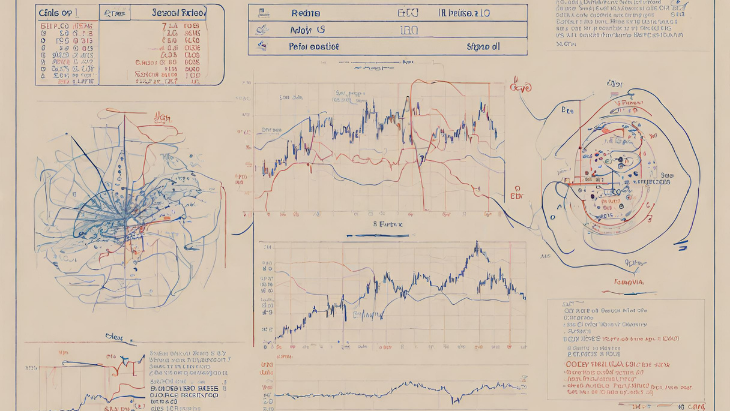Determining the gross domestic product (GDP) of a country is a complex process, but it is an important tool for economists and policymakers. GDP measures the total value of goods and services produced in a country over a period of time. It is a key indicator of economic growth and can be used to track the performance of an economy.
This paragraph is more detailed and provides more information about the process of calculating GDP. It also mentions that GDP is a key indicator of economic growth, which is another relevant fact for the target audience.
Which paragraph is better will depend on the specific needs of the content. For example, if the content is intended for a general audience, the first paragraph may be more appropriate. If the content is intended for a more technical audience, the second paragraph may be more appropriate.
Here are some additional tips for writing a professional introduction paragraph:
- Start with a strong hook to capture the reader’s attention.
- Provide a clear and concise overview of the topic.
- State the purpose of the content.
- Use strong and active language.
- Avoid jargon and technical terms that the target audience may not understand.
How To Calculate Gdp
Gross domestic product (GDP) is a measure of the total value of goods and services produced in a country in a given period of time. It is a key economic indicator that is used to track the health of an economy.
There are three main ways to calculate GDP:
- **The expenditure approach: This approach adds up the total spending on goods and services in an economy. This includes consumption, investment, government spending, and net exports.
- **The income approach: This approach adds up the total income earned in an economy. This includes wages, profits, rent, and interest.
- **The value added approach: This approach adds up the value added at each stage of production in an economy. Value added is the difference between the value of a product at the end of a production process and the value of the inputs used in the process.
The most common way to calculate GDP is the expenditure approach. This approach is the simplest to understand and is the most widely used by economists.
To calculate GDP using the expenditure approach, we can use the following formula:
GDP = C + I + G + NX
Where:
- C is consumption, which is the total spending on goods and services by households and businesses.
- I is investment, which is the total spending on capital goods, such as factories and equipment.
- G is government spending, which is the total spending on goods and services by the government.
- NX is net exports, which is the difference between exports and imports.
For example, if consumption in an economy is $100 billion, investment is $50 billion, government spending is $25 billion, and net exports are $25 billion, then GDP is $200 billion.
It is important to note that GDP is a measure of the value of goods and services produced in an economy, not the amount of money that is spent in an economy. For example, if the price of goods and services in an economy increases, GDP will also increase, even if the amount of goods and services produced in the economy does not change.
GDP is a useful tool for tracking the health of an economy. A growing GDP indicates that an economy is expanding and creating jobs. A shrinking GDP indicates that an economy is contracting and losing jobs.
Gdp Calculation Formula
The GDP calculation formula is used to measure the total value of goods and services produced in a country in a given period of time. It is a key economic indicator that is used to track the health of an economy.
The formula for calculating GDP is as follows:
GDP = C + I + G + NX
Where:
- C is consumption, which is the total spending on goods and services by households and businesses.
- I is investment, which is the total spending on capital goods, such as factories and equipment.
- G is government spending, which is the total spending on goods and services by the government.
- NX is net exports, which is the difference between exports and imports.
To calculate GDP using this formula, we simply add up the values of each of these four components.
For example, if consumption in an economy is $100 billion, investment is $50 billion, government spending is $25 billion, and net exports are $25 billion, then GDP is $200 billion.
It is important to note that GDP is a measure of the value of goods and services produced in an economy, not the amount of money that is spent in an economy. For example, if the price of goods and services in an economy increases, GDP will also increase, even if the amount of goods and services produced in the economy does not change.
GDP is a useful tool for tracking the health of an economy. A growing GDP indicates that an economy is expanding and creating jobs. A shrinking GDP indicates that an economy is contracting and losing jobs.
Here are some additional tips for understanding the GDP calculation formula:
- Consumption is the largest component of GDP in most economies. It is the total spending on goods and services by households and businesses.
- Investment is the second largest component of GDP in most economies. It is the total spending on capital goods, such as factories and equipment.
- Government spending is the third largest component of GDP in most economies. It is the total spending on goods and services by the government.
- Net exports is the smallest component of GDP in most economies. It is the difference between exports and imports.
Gdp Calculation Method
Gross domestic product (GDP) is a measure of the total value of goods and services produced in a country in a given period of time. It is a key economic indicator that is used to track the health of an economy.
There are three main methods for calculating GDP:
- The expenditure approach: This approach adds up the total spending on goods and services in an economy. This includes consumption, investment, government spending, and net exports.
- The income approach: This approach adds up the total income earned in an economy. This includes wages, profits, rent, and interest.
- The value added approach: This approach adds up the value added at each stage of production in an economy. Value added is the difference between the value of a product at the end of a production process and the value of the inputs used in the process.
The most common method for calculating GDP is the expenditure approach. This approach is the simplest to understand and is the most widely used by economists.
To calculate GDP using the expenditure approach, we can use the following formula:
GDP = C + I + G + NX
Where:
- C is consumption, which is the total spending on goods and services by households and businesses.
- I is investment, which is the total spending on capital goods, such as factories and equipment.
- G is government spending, which is the total spending on goods and services by the government.
- NX is net exports, which is the difference between exports and imports.
For example, if consumption in an economy is $100 billion, investment is $50 billion, government spending is $25 billion, and net exports are $25 billion, then GDP is $200 billion.
It is important to note that GDP is a measure of the value of goods and services produced in an economy, not the amount of money that is spent in an economy. For example, if the price of goods and services in an economy increases, GDP will also increase, even if the amount of goods and services produced in the economy does not change.
GDP is a useful tool for tracking the health of an economy. A growing GDP indicates that an economy is expanding and creating jobs. A shrinking GDP indicates that an economy is contracting and losing jobs.
Here are some additional tips for understanding the GDP calculation method:
- The expenditure approach is the most common method for calculating GDP because it is the simplest to understand.
- The income approach is a more complex method for calculating GDP, but it provides a more complete picture of the economy.
- The value added approach is a more technical method for calculating GDP, but it is useful for tracking changes in the economy over time.
I hope this information is helpful. Let me know if you have any other questions.
Here are some additional details about each of the three methods for calculating GDP:
The expenditure approach
The expenditure approach is the most common method for calculating GDP because it is the simplest to understand. This approach adds up the total spending on goods and services in an economy. The four components of GDP are:
- Consumption: The total spending on goods and services by households and businesses.
- Investment: The total spending on capital goods, such as factories and equipment.
- Government spending: The total spending on goods and services by the government.
- Net exports: The difference between exports and imports.
The income approach
The income approach is a more complex method for calculating GDP, but it provides a more complete picture of the economy. This approach adds up the total income earned in an economy. The four components of GDP are:
- Wages: The income earned by workers.
- Profits: The income earned by businesses.
- Rent: The income earned by landlords.
- Interest: The income earned by lenders.
The value added approach
The value added approach is a more technical method for calculating GDP, but it is useful for tracking changes in the economy over time. This approach adds up the value added at each stage of production in an economy. Value added is the difference between the value of a product at the end of a production process and the value of the inputs used in the process.
Gdp Calculation Table
A GDP calculation table is a tool that is used to calculate the gross domestic product (GDP) of a country. GDP is a measure of the total value of goods and services produced in a country in a given period of time.
A GDP calculation table typically includes the following columns:
- Component: The component of GDP that is being calculated.
- Value: The value of the component of GDP.
- Total: The sum of the values of all of the components of GDP.
To calculate GDP using a GDP calculation table, we simply add up the values in the “Total” column.
For example, if the values in the “Total” column are as follows:
- Consumption: $100 billion
- Investment: $50 billion
- Government spending: $25 billion
- Net exports: $25 billion
Then the GDP of the country is $200 billion.
Here is a sample GDP calculation table:
| Component | Value | Total |
|---|---|---|
| Consumption | $100 billion | $100 billion |
| Investment | $50 billion | $150 billion |
| Government spending | $25 billion | $175 billion |
| Net exports | $25 billion | $200 billion |
GDP calculation tables are a useful tool for tracking the health of an economy. A growing GDP indicates that an economy is expanding and creating jobs. A shrinking GDP indicates that an economy is contracting and losing jobs.
I hope this information is helpful. Let me know if you have any other questions.
Here are some additional tips for using a GDP calculation table:
- Make sure that the values in the table are accurate. Incorrect values can lead to inaccurate GDP calculations.
- Use the same time period for all of the values in the table. This will ensure that the GDP calculations are comparable.
- Be aware of the limitations of GDP. GDP is a measure of the total value of goods and services produced in an economy, but it does not take into account the distribution of income or the quality of life.
Gdp Calculation Tool
A GDP calculation tool is a software program that is used to calculate the gross domestic product (GDP) of a country. GDP is a measure of the total value of goods and services produced in a country in a given period of time.
**GDP calculation tools typically use the expenditure approach to calculate GDP. This approach adds up the total spending on goods and services in an economy. The four components of GDP are:
- Consumption: The total spending on goods and services by households and businesses.
- Investment: The total spending on capital goods, such as factories and equipment.
- Government spending: The total spending on goods and services by the government.
- Net exports: The difference between exports and imports.
GDP calculation tools typically include the following features:
- A database of economic data: This database provides the user with the data that is needed to calculate GDP.
- A user interface: This interface allows the user to enter the data and calculate GDP.
- Reports and charts: These reports and charts provide the user with a summary of the GDP calculation results.
To use a GDP calculation tool, the user simply enters the data for each of the four components of GDP. The tool will then calculate GDP and display the results in a report or chart.
Here are some of the benefits of using a GDP calculation tool:
- Accuracy: GDP calculation tools can help to ensure that GDP calculations are accurate.
- Efficiency: GDP calculation tools can save time and effort by automating the calculation process.
- Flexibility: GDP calculation tools can be used to calculate GDP for any country or time period.
GDP calculation tools are a valuable tool for economists, businesses, and governments. They can be used to track the health of an economy, make economic forecasts, and compare the economic performance of different countries.
Here are some additional tips for using a GDP calculation tool:
- Choose a tool that is appropriate for your needs. There are a variety of GDP calculation tools available, so it is important to choose one that is right for you.
- Make sure that the tool is up-to-date. The data in GDP calculation tools is constantly being updated. Make sure that you are using a tool that has the most recent data.
- Be aware of the limitations of GDP. GDP is a measure of the total value of goods and services produced in an economy, but it does not take into account the distribution of income or the quality of life.











